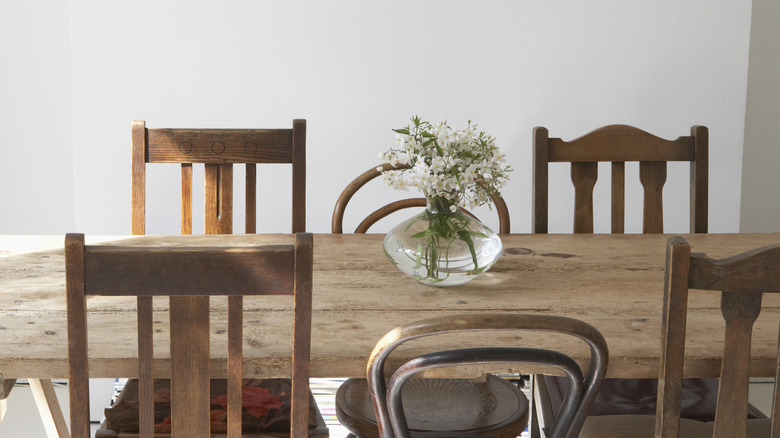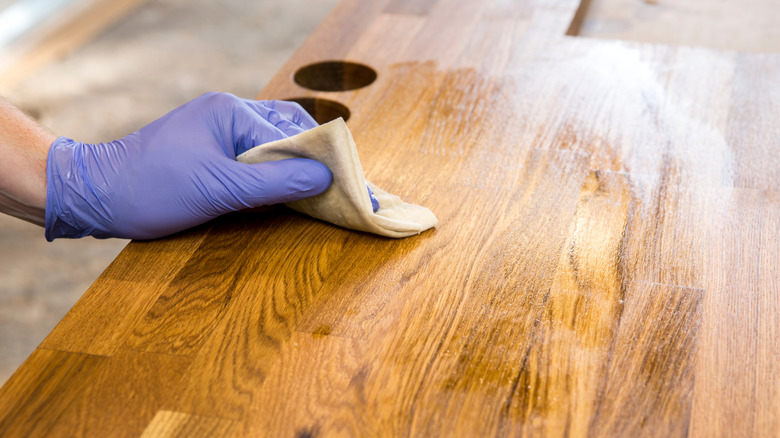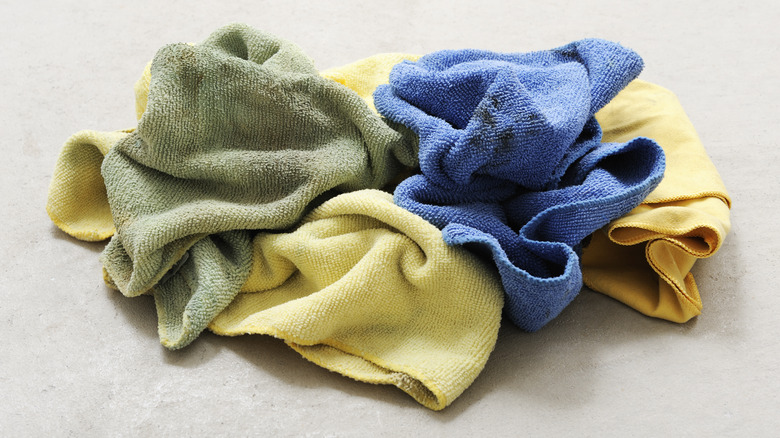The Simple Tip You Need For Long-Lasting Wooden Furniture
Wooden furniture is timeless — everything from Victorian-era side tables to mid-century modern chairs are still trendy today, no matter how many decades have gone by. The trick, however, is taking care of these pieces properly so they don't look haggard with time and use. If they're starting to look worse for wear, then you can help revive tired wooden furniture with linseed oil. Extracted from the flax plant, linseed oil is a natural way to treat and protect raw wood. Not only will it help you revive the piece, but the oil finish will also give it a protective barrier against knicks, scratches, and humidity-related damage, helping your wooden pieces last much longer.
Since it's a natural rather than synthetic wood finish, it's a great eco-friendly pick to protect your items. It's oftentimes used to treat and finish wood that will be used to serve food, such as servingware or cutting boards. Because of this, it's a great replacement for those who are trying to use less chemical-laden products in their maintenance routines. If you have a piece of wooden furniture that needs to be revived, you can give it a facelift with the help of linseed. Here is how.
How to use linseed oil to revive old wooden furniture
If you're ready to refurbish your wooden furniture, you will need to first sand it down before treating the wood with linseed oil. That's because you need to remove any stains, varnishes, polyurethanes, or lacquers covering the raw wood so you can saturate it with the oil. If there is a barrier on top, it won't give you your desired results. Remove any coatings using 120-grit sandpaper, and then wipe off the dust using a slightly damp cloth. You want to ensure you have a clean surface sans any debris before applying your oil finish.
Put on a pair of gloves and mix a 1:1 blend of boiled linseed oil and turpentine, and apply it to your wood using a rag. You don't want to be skimpy with this step — you'll want to add enough oil to saturate the wood and allow it to seep deep into its pores. However, you don't want to create puddles. Give it a few minutes to sink in, and then wipe off the excess with your cloth. Give it a couple of days to fully dry before using the piece again. If you want to create a hard finish on top, then you will need to layer the linseed a few times over a week. You will need a minimum of three coats in order to create a protective barrier against knicks and dings, allowing each layer to dry for two days before adding another.
Caveats to keep in mind
While the piece should be dry within a few days, it can take about a month to fully cure. Keeping this in mind, try to use the piece of furniture sparingly until then, especially if it's a table. You also want to be very careful with how you dispose of your rag, sponge, or paintbrush after applying the product. It can spontaneously catch on fire if you just toss it in the trash, which can cause a whole host of problems you don't need. It does this because when it's exposed to oxygen, linseed oil creates a chemical reaction with the air molecules that creates a large amount of heat. This can cause it to ignite. Leaving it balled up only helps make it hotter.
Instead, you want to lay the cloth or sponge flat in a well-ventilated area, preferably outside and out of the sun or any heat source. Wait until it fully dries, giving it around two to three days. Then, soak it in water and put it into a metal can. Depending on where you live, you might need to drop it off at a special recycling facility, so look up the disposal rules of your local area.


